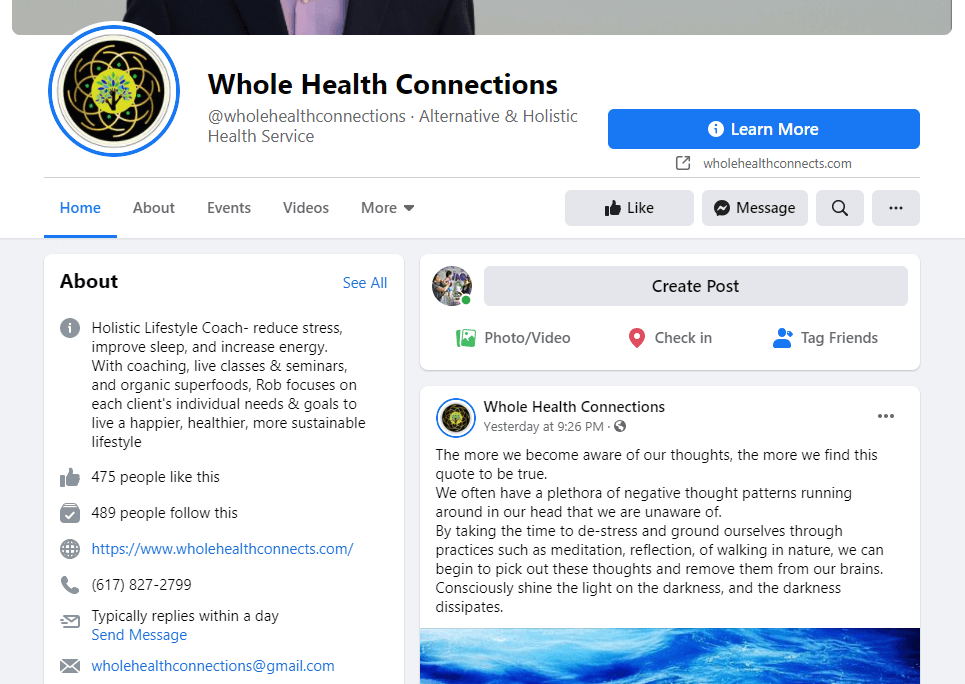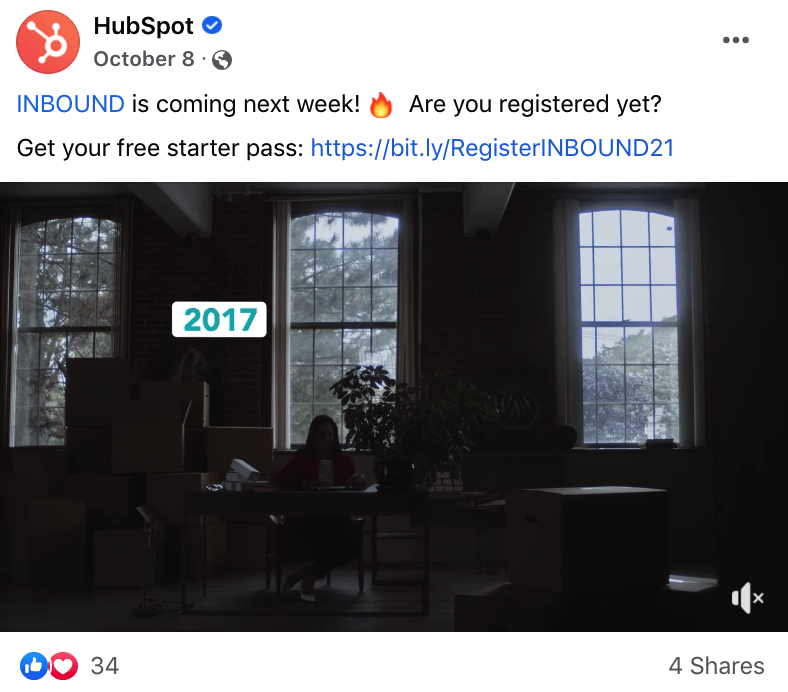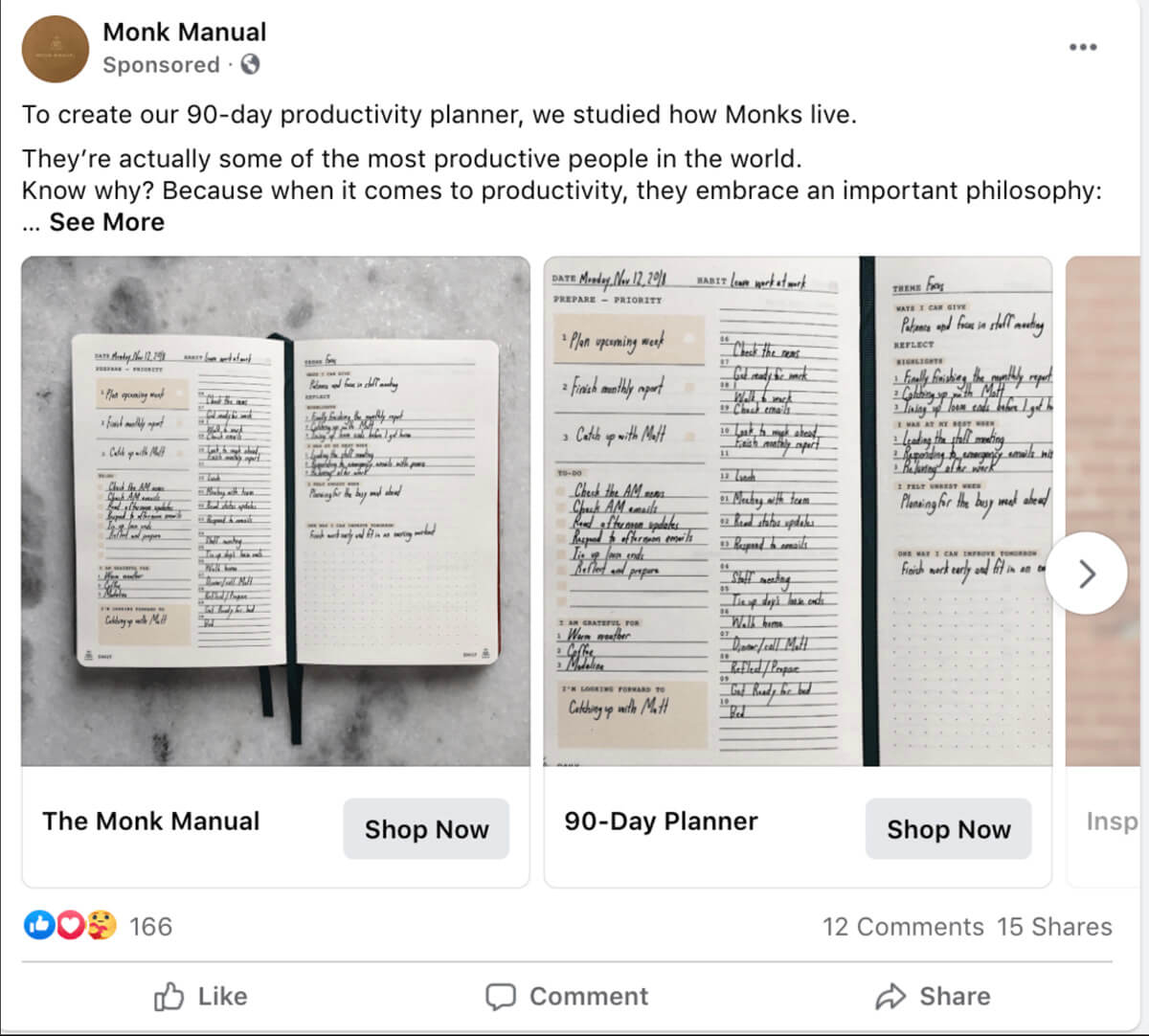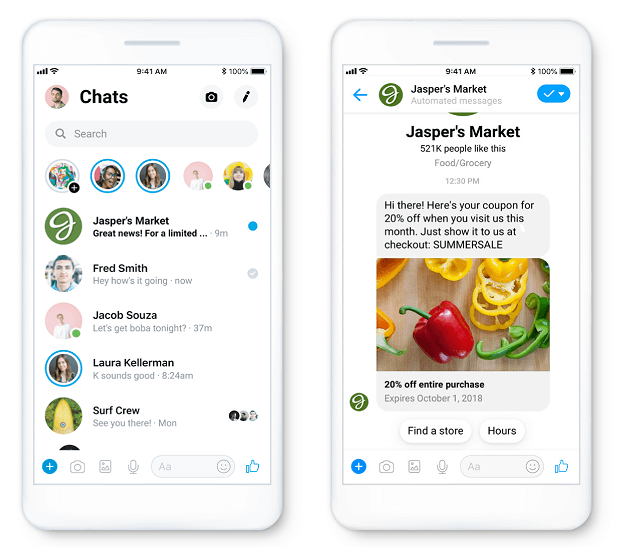Learn the differences between leads, prospects, and opportunities. Understand how to turn leads into prospects and opportunities.
Facebook lead generation is the process of using free and/or paid Facebook inbound marketing strategies to source quality leads for your business. Free strategies involve creating a business page and posting relevant content, while paid strategies consist of running Facebook ad campaigns. It’s primarily for B2C brands, but B2B ones can use it as well. Regardless, there are software tools and marketing agencies that can help you do it correctly.
Marketers use Facebook as a lead generation tool by building their Facebook business page’s presence on the network and gaining followers, to whom they can offer a lead magnet in return for their contact information. Marketers may then add strategies like ads to grow their audience and reach more potential leads. Armed with the contact information of new leads, businesses can nurture these leads to a purchase.
Below is a process to follow sequentially to generate the most quality Facebook leads:
Even if you only choose a few of the strategies we share, still try to do them in order. And keep in mind that although Facebook lead generation is effective in its own right, it’s most powerful when used as a part of a larger lead generation plan. B2C businesses should consider using it alongside other online marketing methods, like SEO content marketing, and different social media lead generation methods, like attracting leads on Pinterest and other B2C-focused platforms.
It’s also important to know that Facebook operates from a branded Facebook business page, unlike LinkedIn, where sellers use a personal profile as their virtual headquarters. This makes Facebook lead generation more effective at making your followers feel connected to your company’s brand and more open to marketing on other social platforms or mediums.
Facebook is a platform mostly used by marketers from both B2C and B2B brands looking to generate social media leads. Regardless of your industry, Facebook is an effective inbound lead generator. On the other hand, Facebook is not well-suited for salespeople looking to do direct outreach. You won’t have much success sending cold Facebook messages to prospects’ inboxes from your personal profile. People use the chat for leisure, not business. Specific Facebook use cases include:
Though mostly focused on entertainment and social connection, Facebook users are still well primed for indirect offerings that appear on their news feeds in the form of interesting articles, fun posts, and ads. This contrasts with users on platforms like LinkedIn, who want to make direct business connections and are primed for direct outreach.
If you’re a B2B company looking for outbound lead generation tactics on social media instead, check out our article on LinkedIn lead generation. Otherwise, keep reading for the best free and paid strategies for inbound lead generation on Facebook.
Begin by enacting free Facebook strategies. First, create a lead magnet. Then start growing your brand’s following on Facebook by creating a Facebook business page, posting relevant content, and running a private group. Finally, make your offer to this following in return for their contact information, a transaction marking the follower to lead conversion. Below you’ll learn how to roll out these strategies step by step.
Lead magnets are free valuable resources that people can receive in return for their contact information. Lead magnets include ebooks, free courses, free trials, consultations, newsletters, and anything else your target leads find valuable. You’ll offer this lead magnet to people in your general news feed posts, private group posts, and your Facebook ads. Once someone clicks on the magnet, they’ll see a form to submit info you’ve chosen to collect from them.
Here are the steps to creating a lead magnet that converts:
While one lead magnet should be enough to attract leads, it’s often smart to create more than one so you can satisfy more of the needs of your target audience. One person might love the free trial, while another would rather have a free course. This diversity of lead magnets is especially important if you have a private group where you want to offer different, more valuable lead magnets, like discounts, than you do in the general feed.
The first step to building a Facebook presence is creating your business’s Facebook page and optimizing it with an on-brand cover and profile photo, a clear business description, a relevant vanity URL, and a call-to-action (CTA) button that offers your lead magnet. This page is an easy-to-maintain online presence for potential leads to discover and learn about your company. If they visit the page and vibe with it, they can follow it and start receiving your brand’s posts.
Below is an example of a business page that works well:

The example business page above has a description that speaks to the desires of its target audience, as well as contact information so followers can easily reach out for help. To create your own business page, head to Facebook’s business page setup wizard and follow the instructions. There, you can choose a page name, select your business’s category, and write a quick business description. It'll also prompt you to add profile and cover photos, all of which we detail below:
Your page’s profile photo is displayed every time you comment on a post or publish to the news feed, meaning it’s the first thing people will notice. So, make it relevant. Most businesses use their company logo. As for the technical side, this Facebook article breaks down the best dimensions and practices to take into account when uploading your profile and cover photo.
Your cover photo, on the other hand, appears across the top of the business page — only page visitors see it. The cover photo gives you the opportunity to use a visual element to capture visitors’ attention or elicit a specific feeling (joy, excitement, comfort). Make it relevant to your brand, helping the visitor understand what your business does. You can also use the space to advertise something, like an upcoming brand event, as SalesLoft has done below:
The description will appear in the About section of your Facebook business page, which will likely be the first place your visitors check out. This makes it a great opportunity to convince them to follow your brand. Do this by making it speak to your target audience’s interests and needs. But you only have 255 characters to work with, so prioritize the key components.
Here are the components of an effective business description:
If you do the above, your visitors will have enough information to make the decision about liking your page. Your ideal leads will also feel connected to your brand now that they understand you help people like them. Check out Salesforce’s example of a short and sweet About section:
After creating your business page, it will receive a random, nonsensical URL. To make your page easier to find and share, create a vanity URL that follows this format: www.facebook.com/{Your Company Name}. To create your vanity URL, head to this step-by-step guide.
Facebook allows you to add a simple CTA button at the top of your Facebook business page. This is a good chance to convert some page visitors into leads. Do this by making a CTA button that brings users to a web page where they fill out a form to get the offer. You’ll see the option to create the button on the top of your page written as “+ Add a button”:
Once clicked, you’ll see that there are seven pre-made options to choose from: Sign Up, Contact Us, Shop Now, Book Now, Watch Video, Use App, and Play Game. Your optimal button verbiage depends on your leads and what action you want them to take. If, for example, your lead magnet is a newsletter subscription, you’d use the “sign up” CTA button. For more on Ad Manager CTA buttons, read Facebook’s article on what CTA buttons are available.
Zappos uses “Shop Now,” which brings you to their website’s home page:
Now that you have a Facebook business page, start posting relevant articles from around the web and status updates to attract followers. If people like what you post, they can head to your Facebook page and click follow. From then on they’ll see your posts on their feed. Over time, they’ll begin to trust your brand and become more likely to accept any offers. Engaging content must relate to your leads’ interests and needs, or be entertaining in some way.
Here are some tips for creating that engaging Facebook content:
Keep in mind that non-followers will also see your posts. That’s how you win more followers, who you can later convert into leads. The best way to make sure your content reaches as far as possible is, according to Facebook, to create “posts that inspire the most back-and-forth conversation in the comments and posts that you might want to share and react to.”
Next, start increasing your level of credibility with your followers by sharing content your brand has published on your website, or, in other cases, another publication like Medium. These can be articles and videos that educate people on how to solve a problem, entertain them with insights and news analysis, or introduce them to a product or feature.
Here are some best practices for posting content you’ve published:
When leads click on the article they’ll be swept off to your website, where they can peruse at their leisure and become more familiar with your brand. Also, if you’ve hosted lead magnets across your website, your leads might come across them in any given article and download it. Hence, you’ve secured a lead indirectly. Now that you’ve created a large following, it’s time to turn the most promising of them into dedicated fans.
Page followers are one thing, but loyal fans are another. Start that fanbase by creating and managing a private Facebook group into which you post more premium content and offers, such as discounts. This provides a space for your members to get to know your brand and each other. As their loyalty grows, so will your chances of converting them into leads. They’ll be more likely to download your lead magnet than more generic followers.
Here’s how to create and manage a private Facebook group for lead generation:
Once people join the group, members will also be able to form relationships and have conversations with others in the group. This is powerful, as it creates a familial feeling around your brand. There are other ways to make your private group extremely valuable to its members, including some best practices for posting and managing the group.
Aside from posting regularly (a few times a week), there are some other best practices you can follow to ensure your members are happy with your content. This includes welcoming new members, posting at ideal times, posting unique content, and inspiring chitchat.
Here are the best practices for posting in a private Facebook group:
When your members feel nourished by your brand’s content, they'll start to experience feelings of connection to your business. This increases the odds that they’ll respond well to your offers, whether it's in this group or the general news feed. Hence, you’ll be able to generate more leads.
Running a private Facebook group is more than just posting awesome content. You also have to manage it correctly. There are some rules to follow to ensure your group grows consistently without ever losing its personable charm.
Here are some tips for managing your private Facebook group:
At this point, you have your lead magnet, a large following, and a strong fanbase for your brand. It’s now time to start offering this lead magnet to these ideal leads through two main free methods. Read on to learn how.
You can offer lead magnets for free via two methods: posting it in your private Facebook group, and posting it to the news feed. We recommend doing both. Ideally, follow the 20:80 rule, which states that 20% of your posts should offer a lead magnet, while the remaining 80% should provide valuable content that asks nothing of your audience, aside from maybe leaving a comment. This way, your audience thinks of you primarily as a generous provider of value with no strings attached.
Here are some best practices for offering the lead magnet in a Facebook post:
Keep in mind that you can also offer your lead magnets indirectly, via a recommendation to check out a blog post that offers the lead magnet in the copy. This is one reason why combining content marketing with Facebook lead generation is so powerful. If you feel you’ve been posting too many offers on Facebook, you can get leads to your blog and let the articles nurture them further, and pitch the lead magnet. For now, see this lead magnet Facebook post by HubSpot:

Once you’ve gotten the hang of the free strategies, created a sizable following, and started to generate some leads, you can look to paid methods for speeding up the process. If that sounds like too much, you can hire a Facebook ad agency to do these paid strategies for you, as well as some of the free ones that might be too time-consuming. If that sounds like your ideal situation, skip ahead to our section on the best agencies. Otherwise, read on for paid methods.
Paid Facebook lead generation strategies boil down to three different types of Facebook ads: boosted posts, pay-per-click (PPC) ads, and Messenger ads. These paid strategies are most effective when incorporated after enacting the free strategies discussed above. They can help you expand your audience and increase the number of leads generated by both boosting your posts and advertising your lead magnet to non-followers who fit your ideal customer profile.
As for how they work, paid ads are targeted to users based on their location, demographics, and profile information, and they appear on your audience’s news feed or in their Messenger app. Users who click the ad go to a landing page or, with lead ads, enter information directly on Facebook. The steps for creating any Facebook ad are outlined in this Facebook guide. Besides boosted posts, you can create and manage all these ads in your Facebook Ads Manager.
For the best results, we recommend using a combination of these paid methods, since it will diversify your reach and give you more data about your customers’ behavior, which you can use to instruct your future campaigns. As for optimal order, start with boosting some of your best posts, then start paying to run PPC ads, and finally layer on Messenger ads. Now, let’s go over the three types of ads you can add to your Facebook lead generation strategy.
A boosted post is a post on your page’s timeline that you can make visible to an audience of your choosing — one that fits specific demographics. Their specialty is maximizing the reach of your best posts, thereby growing your audience and increasing lead generation opportunities.
To boost a post, follow these steps:
Unlike the other ad types, you do not create boosted posts in Ads Manager. These ads also have fewer customization features than the others. They’re mainly for getting your brand in front of new potential leads in the hopes that they’ll like what they see and follow your page. You can also boost posts that offer your lead magnets, thereby directly catching more leads.
Facebook PPC ads are the basic display ads that show up on your audience's news feed and that drive traffic directly to your website or a dedicated landing page. They come in 10 different formats, including videos, carousels, and images. The copy and multimedia in these ads are meant to spark interest in your ideal customers, who will then click on the ad and enter into your lead generation funnel. Below is an example of one of these ads:

Also, consider using Facebook lead ads — PPC ads that contain an embedded form that captures a lead’s information, such as name and email address, directly on the platform. When people tap the ad, the form pops up preloaded with their Facebook contact information, unless it’s a custom field. The lift for the lead is therefore light; through just a few clicks, they get what they want, and you generate a new lead.
Having collected data from your PPC ads, you can gain an even better understanding of your target audience. It’s a good time to start sending targeted, automated direct messages using Facebook Messenger ads, an advertising option that’s meant to begin conversations with individuals in the Messenger app, thereby making the advertising feel more personal. The generated message could ask the recipient to download or sign up for a lead magnet.
Facebook Messenger ads fall into the following three main categories:
Incorporating these ads into your Facebook lead generation plan is a great way to expand your brand’s audience, offer your lead magnet, and generate more leads for your business. To illustrate, here’s an example of what it looks like to receive a sponsored message ad:

There are plenty of tools out there that can assist you in your efforts to generate leads on Facebook. Three of the best are Facebook Ads Manager, AdEspresso, and AdRoll. The first is a Facebook tool that enables you to create and manage ad campaigns. The other two are software tools that help you enhance, track, and automate parts of your ad campaigns.
Facebook Ads Manager is Facebook’s native tool that you can use to create and manage your targeted ad campaigns while also tracking their performance. It’s designed for people of any experience level; even salespeople with little advertising experience can quickly and easily create targeted ads.
For instance, Ads Manager offers a step-by-step wizard that guides you through the creation of your ad campaign, prompting you to answer questions about your budget, your audience and their demographics, and your objectives. This will come in handy when you’re using the paid strategies we mentioned above to enhance your Facebook lead generation strategy.
AdEspresso, which starts at $49 per month, is a Facebook ads tool that helps you create, optimize, and analyze your ad campaigns. The best thing about the tool is its analytical abilities — while your campaigns run, you can monitor them along with key metrics on a customizable dashboard. Best of all, AdEspresso’s own algorithm will give you optimization tips based on a campaign’s performance, eliminating the guesswork and analytical work on your end.
AdRoll assists you in retargeting your ads on Facebook. Retargeting works like this: someone visits your website but leaves without taking the action you desired. While using Facebook, they see a retargeted ad on their news feed, asking them to take that same desired action. They click on the ad and return to your website to take the action. AdRoll pricing starts with a pay-as-you-go tier for ad display.
These software options range in price and ultimately help with the management of your own original ads and campaigns. Next, we’ll list some of the top Facebook lead generation companies that assist in the content and campaign creation.
Facebook lead generation ad agencies will help you create and enact the Facebook marketing strategies we’ve discussed above, whether that's via creating and posting content or building, running, and monitoring paid advertising campaigns. They usually offer custom packages to help you achieve your goals. Three of the best agencies are Hibu, Marketing360, and Voy Media.
Hibu is a quote-based digital marketing agency designed for small and medium-sized businesses wanting extremely customized campaigns, and offers a one-stop-shop for all of your Facebook lead gen needs. They’ll set up your business page, consistently post content to build authority, and create and run ads. Their Facebook ad services come with a dedicated digital specialist who can create an effective social media plan for your brand.
Marketing360 is a marketing agency that offers an automation platform with a wide range of functionality including social media and email marketing. Pricing starts at $595 per month, plus the additional monthly ad spend. You’ll get a dedicated account manager to serve you and your business and help with creating, managing, and tracking campaigns. This allows you to take a hands-off approach to Facebook marketing with their inhouse campaign optimization.
Voy Media is a Facebook ad agency that's known for eye-catching images and thought-provoking copy that stop Facebook users mid-scroll. Clients often use them for full-service Facebook advertising, where they have a dedicated account manager create, track, and improve campaigns. Voy Media is best for large companies with at least $5,000 per month to spend, or those looking for a la carte advertising services.
When interacting with these agencies, you can expect the following process: First, you’ll have an introductory meeting, during which a representative will ask you about your objectives, business, and audience to determine whether it’s a good fit. Next, they’ll do research and create a plan tailored to your needs. If you like the plan and decide to work with them, the agency will introduce you to your account manager, ask for access to your website and Facebook page, and then get to work.
There are currently 1.6 billion people connected to a small business on Facebook. It’s a great place to build a brand, spread that brand’s reach, and turn users and followers into leads for your products and services. Here are some other reasons why Facebook should have a place in your lead gen plan:
Keep in mind that the benefits amplify when you’re using it alongside other lead generation strategies. Building presences on other social platforms enables you to cast a wider net while also interacting with your Facebook followers on their other favorite social networks.
Generating Facebook leads can be done by using both free and paid strategies that help build interest around your brand, collect contact information with lead magnets, and expand your offer’s reach. You can choose what free or paid methods work and resonate best with your Facebook audience by testing them individually. Now that you have an idea of what Facebook lead generation entails, check out our article for a step-by-step guide on creating Facebook lead ads.
This article was written by Sam Rinko and updated by Allyssa Haygood-Taylor.